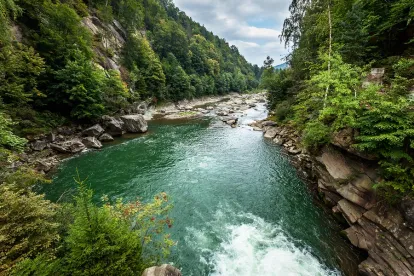The US Supreme Court may be poised to review two 2018 decisions in the Fourth and Ninth Circuits, both of which applied the so-called ‘hydrological connection” theory to extend jurisdiction of the Clean Water Act (“CWA”) to cover pollutants that reach surface waters via groundwater. The Sixth circuit, in addressing the same issue later in 2018, openly criticized the Fourth and Ninth Circuits’ reasoning and flatly declared that “the CWA does not extend liability to pollution that reaches surface waters via groundwater.” The ideological Circuit split is clear and is arguably deepened by two older decisions in the Fifth and Seventh Circuits. The Fifth Circuit found, in 1994, that “neither the Clean Water Act nor the EPA’s definition asserts authority over ground waters, just because these may be hydrologically connected with surface waters.” Similarly, in 2001, the Seventh Circuit determined that groundwater is not “within the class of waters protected by the CWA.”
Significantly, protecting the quality of “navigable waters” is not the only objective of the CWA. Congress specifically provided that another objective of the CWA is “to recognize, preserve, and protect the primary responsibilities of the States to prevent, reduce, and eliminate pollution, to plan the development and use (including restoration, preservation, and enhancement) of land and water resources.” This, then, is the reason why Congress confined CWA jurisdiction to “navigable waters” and then defined “navigable waters” as “the waters of the United States, including the territorial seas.” The states were meant to “preserve and protect” all other waters within their boundaries. In fact, with respect to the Fourth and Ninth Circuit cases, the states of South Carolina and Hawaii were involved, before the litigation was filed, in remediation, restoration and/or permitting to address conditions and activities that were alleged to be violations of the CWA.
The Fourth and Ninth Circuit cases were both initiated by environmental groups which filed under the citizens’ suit provision of the CWA. In both cases, the plaintiff environmental groups sought to impose actions on defendants which were not being required by the states. Similar CWA citizens suits have been filed in multiple District courts across the country, alleging CWA liability via various iterations of the “hydrological connection” theory. The District Courts have also split over whether the CWA governs the introduction of pollutants to surface waters via groundwater.
In early December 2018, the Supreme Court took the curious step of inviting the US Solicitor General to provide views of the United States on the Fourth and Ninth Circuit cases. This request could well indicate the Supreme Court’s interest in reviewing the Fourth and Ninth Circuit decisions which expanded the reach of the CWA. On January 3, 2019, the Solicitor General filed its brief in response to this request and asked the US Supreme Court to resolve the Circuit Court split on whether the CWA applies when pollutants from a point source reach navigable waters after traveling through groundwater.
Petitions for review of the Fourth and Ninth Circuit decisions were filed with the Supreme Court within a day of each other this past October and briefing was completed in November





 />i
/>i


